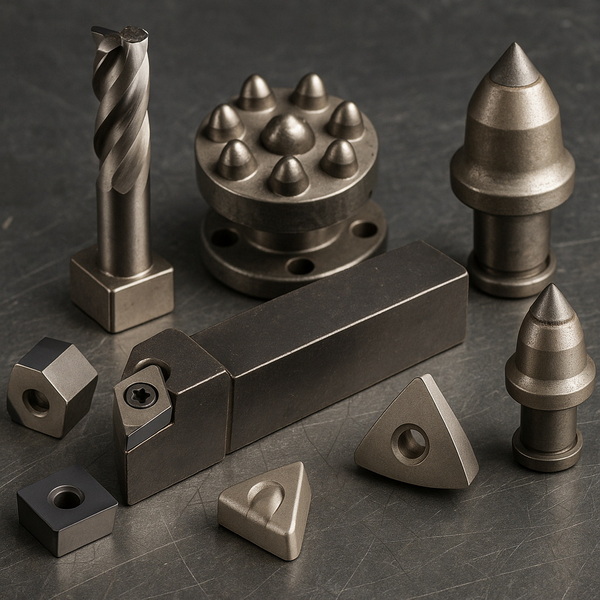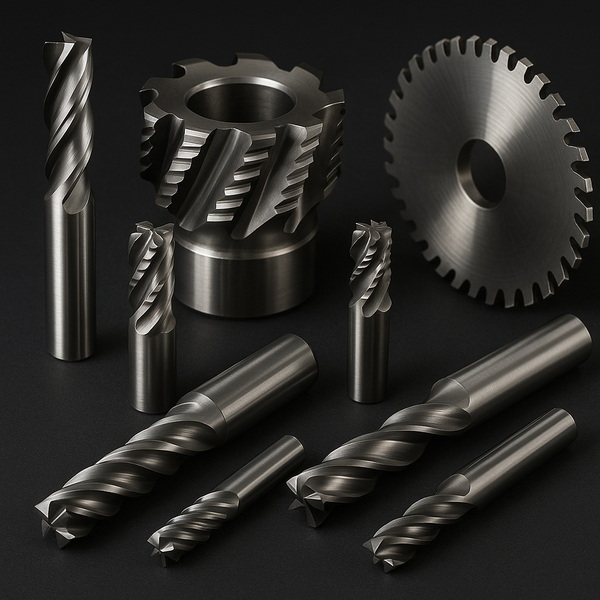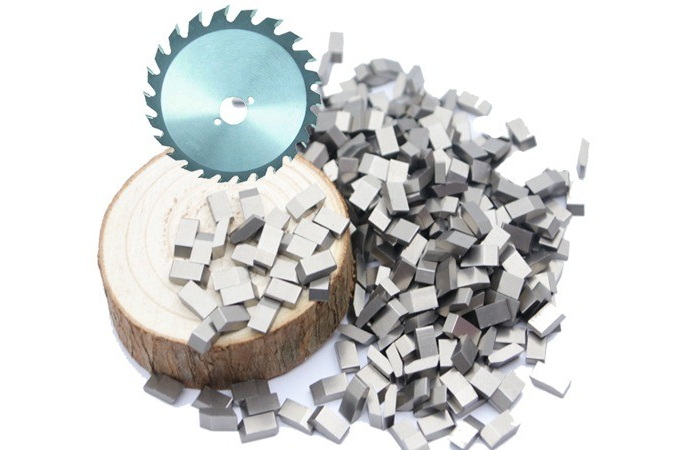Content Menu
● Understanding Boron Nitride
>> Forms of Boron Nitride
>> Hardness and Properties of Cubic Boron Nitride
>> Thermal and Electrical Properties
● Understanding Tungsten Carbide
>> Hardness and Mechanical Properties
>> Thermal and Chemical Stability
● Detailed Crystal Structures and Bonding
● Expanded Industrial and Technological Applications
● Environmental and Economic Considerations
● Future Research and Developments
● Mechanical Properties and Performance in Different Conditions
● Summary of Key Differences
● Conclusion
● Frequently Asked Questions (FAQ)
>> 1. What is the main difference between boron nitride and tungsten carbide in terms of hardness?
>> 2. Can tungsten carbide be harder than boron nitride under any conditions?
>> 3. Why is cubic boron nitride preferred over tungsten carbide for cutting hardened steels?
>> 4. Is tungsten carbide cheaper than cubic boron nitride?
>> 5. Are there other forms of boron nitride besides cubic boron nitride?
When it comes to superhard materials used in industrial applications such as cutting tools, abrasives, and wear-resistant parts, both boron nitride and tungsten carbide are among the top contenders. However, they differ significantly in their crystal structures, hardness, thermal stability, and typical uses. This article explores the hardness and other relevant properties of boron nitride (especially cubic boron nitride) and tungsten carbide, comparing their strengths and weaknesses to answer the question: Which is harder, boron nitride or tungsten carbide?

Understanding Boron Nitride
Boron nitride (BN) is a compound made of boron and nitrogen atoms, existing in several crystalline forms that exhibit vastly different properties.
Forms of Boron Nitride
- Hexagonal Boron Nitride (h-BN): Analogous to graphite in structure, it is soft and lubricious with strong covalent bonds within layers but weak bonding between layers.
- Cubic Boron Nitride (c-BN): Has a diamond-like cubic crystal structure, making it extremely hard and thermally stable.
- Wurtzite Boron Nitride (w-BN): A hexagonal form structurally similar to lonsdaleite (hexagonal diamond), with hardness potentially exceeding diamond.
Hardness and Properties of Cubic Boron Nitride
Cubic boron nitride is the second hardest material known after diamond, with a Mohs hardness of approximately 9.5 to 10. Its Vickers hardness can reach up to 4800 HV, which is significantly higher than tungsten carbide's (around 2400 HV). CBN is also chemically stable and retains its hardness at high temperatures, making it ideal for cutting hardened steels and abrasive environments.
CBN's hardness derives from its strong covalent bonding in a cubic lattice, similar to diamond but with better thermal and chemical stability when machining ferrous materials. Polycrystalline c-BN with nanometer-sized grains can exhibit hardness comparable to or exceeding diamond.
Thermal and Electrical Properties
Boron nitride, especially c-BN, has excellent thermal conductivity among electrical insulators and can withstand very high temperatures (up to 2350°C mechanically). It also exhibits wide band-gap semiconductor properties, emitting UV light under voltage, which opens applications beyond hardness, such as LEDs and lasers.
Understanding Tungsten Carbide
Tungsten carbide (WC) is a compound of tungsten and carbon atoms in a hexagonal crystal lattice. It is widely used in industrial machinery, cutting tools, mining, and wear parts due to its high hardness and toughness.
Hardness and Mechanical Properties
Tungsten carbide has a Mohs hardness around 9 to 9.5 and a Vickers hardness approximately 2400 HV. It is extremely stiff, with a Young's modulus between 530 and 700 GPa, about three times that of steel. Its density is high (~15 g/cm³), contributing to its robustness.
WC is tough and can be sintered with cobalt binders to improve fracture toughness, balancing hardness and brittleness. It is harder than most steels and ceramics but still softer than cubic boron nitride.
Thermal and Chemical Stability
WC has a high melting point (~2780°C) and good thermal conductivity (~110 W/m·K). However, it oxidizes starting at 500–600°C and decomposes at very high temperatures. It is chemically stable against many acids but can be attacked by mixtures like hydrofluoric acid and nitric acid.
Detailed Crystal Structures and Bonding
The exceptional hardness of cubic boron nitride (c-BN) and tungsten carbide (WC) can be attributed to their unique crystal structures and the nature of atomic bonding within these structures.
- Cubic Boron Nitride: Adopts a zinc-blende crystal structure similar to diamond, where each boron atom is tetrahedrally coordinated to four nitrogen atoms and vice versa. This strong covalent bonding network results in a rigid lattice that resists deformation. The strong directional bonds in c-BN contribute to its high hardness and thermal stability.
- Tungsten Carbide: Crystallizes in a hexagonal close-packed structure where tungsten and carbon atoms are tightly packed. The bonding in WC is a mixture of covalent, metallic, and ionic character, which provides a balance between hardness and toughness. The metallic bonding component allows some degree of plastic deformation, which enhances toughness compared to purely covalent materials like c-BN.
Expanded Industrial and Technological Applications
Beyond cutting tools and abrasives, both boron nitride and tungsten carbide find uses in a variety of advanced technological fields.
- Cubic Boron Nitride: Used in high-performance coatings for aerospace components due to its resistance to oxidation and thermal degradation. It is also employed in electronic devices as a substrate material for high-power, high-frequency semiconductors because of its excellent thermal conductivity and electrical insulation properties. Additionally, c-BN is used in precision grinding wheels and polishing applications where extreme hardness is required.
- Tungsten Carbide: Widely used in manufacturing mining tools, drill bits, and wear-resistant coatings. Its toughness makes it suitable for applications involving impact and abrasion. Additionally, WC is used in jewelry as a durable and scratch-resistant material for rings and watches. It also serves in metal forming and extrusion dies, where its wear resistance prolongs tool life.

Environmental and Economic Considerations
The production of both materials involves energy-intensive processes.
- Cubic Boron Nitride: Synthesis typically requires high-pressure, high-temperature (HPHT) methods, which consume significant energy and require specialized equipment. The complexity of production contributes to its higher cost and limited availability.
- Tungsten Carbide: Production involves sintering tungsten and carbon powders, which is less energy-intensive but still requires careful control of conditions. WC is more affordable and widely available, making it the material of choice for many industrial applications.
From an environmental standpoint, mining and refining tungsten and boron resources have ecological impacts. Recycling of tungsten carbide tools is common to reduce waste and resource consumption. Research into greener synthesis methods for c-BN is ongoing to reduce its environmental footprint.
Future Research and Developments
Research continues into improving the synthesis methods and properties of superhard materials.
- Boron Nitride: Efforts focus on producing larger, defect-free crystals of cubic and wurtzite forms to fully exploit their hardness potential. Nanostructuring and composite materials incorporating c-BN aim to enhance toughness while maintaining hardness. New synthesis techniques such as chemical vapor deposition (CVD) are being explored to create thin films and coatings with superior performance.
- Tungsten Carbide: Research aims to improve its oxidation resistance and thermal stability through alloying and advanced coatings. Hybrid materials combining WC with other ceramics or metals are being developed to optimize performance for specific applications. Innovations in binder materials, such as replacing cobalt with less toxic alternatives, are also underway.
Mechanical Properties and Performance in Different Conditions
The performance of c-BN and WC varies under different mechanical and environmental conditions.
- Cubic Boron Nitride: Maintains its hardness at elevated temperatures, making it ideal for high-speed machining where heat generation is significant. Its chemical inertness prevents degradation in aggressive environments, enabling longer tool life when cutting ferrous metals.
- Tungsten Carbide: While very hard, can oxidize and degrade at temperatures above 500–600°C, limiting its use in high-temperature applications. However, its superior toughness allows it to absorb impacts and resist fracture better than c-BN, which is more brittle. This toughness makes WC preferable in applications where mechanical shock is common.
Summary of Key Differences
| Property | Cubic Boron Nitride (c-BN) | Tungsten Carbide (WC) |
| Crystal Structure | Zinc-blende cubic | Hexagonal close-packed |
| Bonding | Strong covalent | Mixed covalent, metallic, ionic |
| Hardness | Mohs 9.5–10, Vickers up to 4800 HV | Mohs 9–9.5, Vickers around 2400 HV |
| Toughness | Lower, more brittle | Higher, more impact resistant |
| Thermal Stability | Up to 2350°C mechanical stability | Oxidizes above 500–600°C |
| Density (g/cm³) | ~3.5 – 3.6 | ~15 |
| Typical Applications | Cutting hardened steels, electronics, aerospace coatings | Mining tools, wear parts, jewelry |
Conclusion
In the battle of hardness between boron nitride and tungsten carbide, cubic boron nitride clearly stands out as the harder material, with a Mohs hardness of 9.5 to 10 and Vickers hardness nearly double that of tungsten carbide. Its superior thermal stability and chemical resistance make it indispensable for cutting hardened steels and abrasive machining tasks where tungsten carbide tools might fail.
Tungsten carbide, however, remains a versatile, tough, and cost-effective material widely used in industry. Its hardness is impressive but does not surpass that of cubic boron nitride. Therefore, for applications demanding the utmost hardness and thermal stability, cubic boron nitride is the preferred choice, while tungsten carbide is favored where toughness and cost-efficiency are priorities.

Frequently Asked Questions (FAQ)
1. What is the main difference between boron nitride and tungsten carbide in terms of hardness?
Cubic boron nitride is significantly harder than tungsten carbide, with a Mohs hardness of about 9.5–10 compared to tungsten carbide's 9–9.5. Its Vickers hardness is also much higher, making it more wear-resistant in demanding applications.
2. Can tungsten carbide be harder than boron nitride under any conditions?
No, tungsten carbide's intrinsic hardness is lower than cubic boron nitride. However, tungsten carbide offers better toughness and is less brittle, which can be advantageous depending on the application.
3. Why is cubic boron nitride preferred over tungsten carbide for cutting hardened steels?
Cubic boron nitride maintains its hardness and chemical stability at high temperatures and resists wear better when machining ferrous materials, which can degrade tungsten carbide tools faster.
4. Is tungsten carbide cheaper than cubic boron nitride?
Yes, tungsten carbide is generally less expensive and easier to produce, making it more common in many industrial tools where extreme hardness is not the primary requirement.
5. Are there other forms of boron nitride besides cubic boron nitride?
Yes, hexagonal boron nitride (h-BN) is a softer form used as a lubricant, and wurtzite boron nitride (w-BN) is a rare form that may be even harder than diamond but is difficult to synthesize in pure form.
















